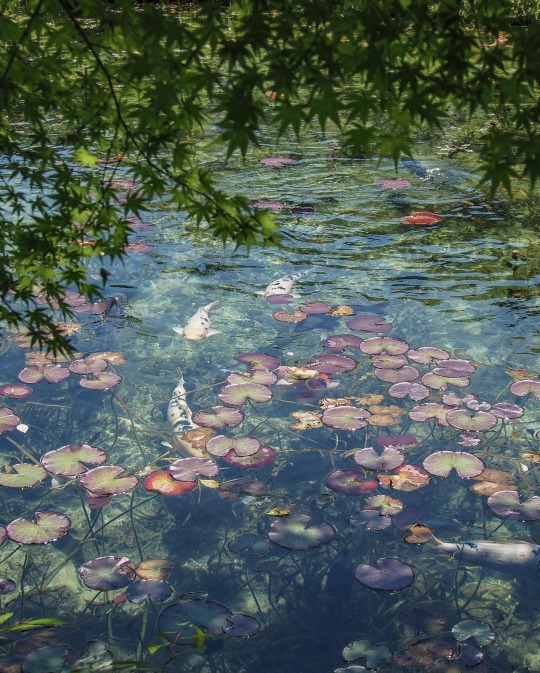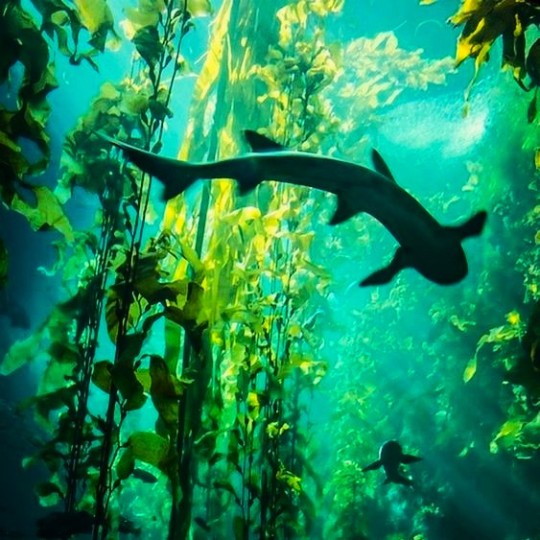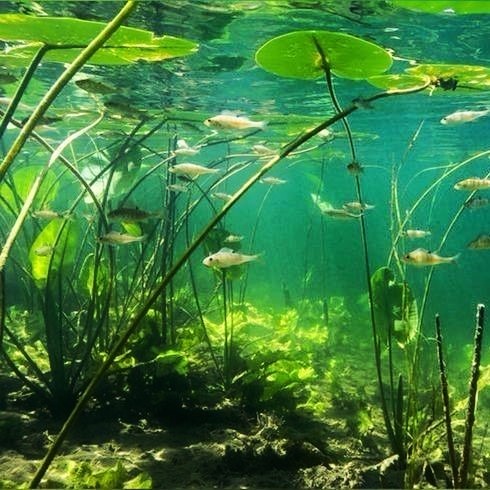#The Water-Lily Pond
Explore tagged Tumblr posts
Text

The Water-Lily Pond (1899) 🎨 Claude Monet 🏛️ The National Gallery 📍 London, United Kingdom
For Monet, gardens offered a refuge from the modern urban and industrial world, although he and his fellow garden enthusiasts benefited from modern advances in botanical science that were creating new hybrid flowers in a wide choice of shapes and colours that could be produced on an almost industrial scale. He made modest gardens in the homes he rented in Argenteuil and Vetheuil in the 1870s, but from 1883, when he moved to a rented house in Giverny, about 50 miles to the west of Paris, he had more scope to indulge his passion for plants. He became a dedicated gardener with an extensive botanical knowledge, and sought the opinions of leading horticulturalists. As Monet’s career flourished his increasing wealth enabled him to fund what became a grand horticultural enterprise: by the 1890s he was employing as many as eight gardeners.
Monet began by refashioning the garden in front of the house, the so-called ‘Clos Normand’, replacing the existing kitchen garden and orchard with densely planted colourful flower beds that were filled with blooms throughout the seasons. He was able to buy the house in 1890, and three years later he purchased an adjacent plot of land next to the river Epte beyond the railway line at the edge of his property. The plot had a small pond with arrowhead and wild water lilies, which he wanted to turn into a water garden with a larger lily pond ‘both for the pleasure of the eye and for the purpose of having subjects to paint’.
The idea may have occurred to him after he had seen the water garden at the 1899 Exposition Universelle in Paris created by the grower Joseph Bory Latour-Marliac, who bred the first colourful hardy waterlilies. Monet began by requesting permission from the Prefect of the Eure to dig irrigation channels from the Ru – a branch of the Epte – to feed his pond, but the Giverny villagers objected, fearing it would contaminate the water and that the foreign plants would poison their cattle. Monet was furious, but three months later permission came through and he began to enlarge the existing pond, replacing the wild water lilies with Latour-Marliac hybrids available in yellows, pinks, whites and violets.
The pond was enlarged on further occasions – in 1901 and 1904 – tripling the size of the water garden. Together with the flower garden on the other side of the railway track it became the principal preoccupation of the last 26 years of Monet’s life. While the Clos Normand garden was laid out along fairly traditional lines, harking back to the formal French gardens of seventeenth-century Europe, with a central alleyway and geometrically arranged beds, the water garden was more Eastern in inspiration. Its less regimented, more natural design and more muted colours created a quieter, meditative atmosphere. Monet erected a Japanese bridge over the western end of the pond that took its inspiration from the bridges in ukiyo-e Japanese prints. He was a keen collector of these prints and he owned a copy of Hiroshige’s Wisteria at Kameido Tenjin Shrine (1856), one of the many prints that features a curved bridge. In a more general sense, the water garden reflected Monet’s admiration for the Japanese appreciation of nature.
Monet had to wait for his water garden to mature before he could begin to paint it in earnest. As he later recalled: ‘It took me some time to understand my water-lilies. It takes more than a day to get under your skin. And then all at once, I had the revelation – how wonderful my pond was – and reached for my palette. I’ve hardly had any other subject since that moment.’ In total, Monet painted 250 canvases of his water garden. Around 200 of these represent water lilies floating on the surface of the water, while the remainder also show the Japanese bridge, the weeping willow trees and wisteria and the irises, agapanthus and day lilies on its banks. In all these pictures Monet was painting a subject that was already ‘pictorial’ – a landscape that had been carefully composed according to his personal aesthetic. The National Gallery has three further paintings of the water garden :Water-lilies, setting sun; Irises; and Water-lilies.
Monet painted three views of the Japanese bridge in 1895, not long after it had been constructed, but then took a break from the subject, only returning to it in 1899. By now the pool was overhung by vegetation and surrounded by plants, but to judge from contemporary photographs it was never as enclosed as Monet painted it, and he exaggerated the feeling of claustrophobia. In December 1900 he exhibited 12 paintings at Durand-Ruel’s gallery in Paris, all of which showed more or less symmetrical views of the Japanese bridge.
In this painting, as in the others in the series, we are looking down onto the surface of the water, where the lily pads float into the distance, meeting the dense foliage on the far bank. Weeping willows are reflected in the pond and clumps of iris border its banks. The perspective seems to shift so that it is hard to find a single focal point; it is as though we are looking up at the bridge but down on the waterlilies. The picture, like the water itself, seems to oscillate between surface and depth. The mainly vertical reflections provide a counterpoint to the horizontal clumps of the lily pads. Different colours, applied with thick brushstrokes, are placed next to each other. This way of painting has more in common with Monet’s early Impressionist works than his more recent paintings of mornings on the Seine, where he had used softer, more blended strokes to convey hazy atmospheric effects.
The Japanese bridge series marked a turning point in Monet’s art. From now on his subjects were painted from an increasingly confined viewpoint, conveying the sense of an enclosed world. In later paintings of the pond, he would dispense with the banks and bridge altogether to focus solely on the water, the reflections and the water lilies. The culmination of Monet’s water lily paintings were the Grandes Dėcorations, 22 enormous canvases each over two metres high and totalling more than 90 metres in length, which he completed months before his death and donated to the French state. These are now on permanent display in two oval rooms in the Musée de l’Orangerie, Paris.
#The Water-Lily Pond#1899#Claude Monet#The National Gallery#London#United Kingdom#oil painting#painting#oil on canvas#Modern art#Impressionism#french#art#artwork#art history
134 notes
·
View notes
Text
Claude Monet in York, England. “The Water-Lily Pond”


Water Lillies is a series of 250 oil paintings by the French artist Claude Monet.
Monet spent three decades painting different water lillies, from the late 1890s until his death in 1926.
sophie’s note: Seeing this painting was a dream come true! Claude Monet is one of my favorite artists ever, most of my artwork is inspired by his. Being up and close to one of his most famous pieces was surreal. I hope to see more pieces of his art around the world in the future!!
#claude monet#art#york#The Water-Lily Pond#classic art#nature#water lillies#claude#money#impressionist#impressionism#artwork#york art gallery
5 notes
·
View notes
Text





𝖼𝗎𝗋𝗂𝗈𝗎𝗌 𝖼𝖺𝗍 𝖻𝗒 𝗃𝖾𝖿𝖿𝗋𝖾𝗒𝗐 ♡
#curious cats - gotta love em <3#cottagecore#nature#naturecore#cats#animals#water#water lillies#water lily#pond#garden#kittens#photography#cottage aesthetic
13K notes
·
View notes
Text

Zilker Park Botanical Garden, Texas, USA
#zilker botanical garden#texas#usa#botanical#nature#greenery#bridge#little bridge#water lily#pond#nature aesthetic#garden#petitworld
3K notes
·
View notes
Text

pink water lily
2024/06/22
#photography#photographers on tumblr#nature#naturecore#nature photography#aesthetic#flowers#adventure#flora#poland#garden#botanical garden#botanic#summer#lily#lilies#water lilies#pond
1K notes
·
View notes
Text


Tomoko M. - 岐阜 モネの池 :: Monet's Pond (2023)
4K notes
·
View notes
Text

The Swan Maidens by Walter Crane
#walter crane#art#swan#maidens#swans#maiden#wings#lake#pond#lily pad#lily pads#water lilies#mythology#folklore#bathing#transformation#europe#european#swan maidens#water lily
844 notes
·
View notes
Photo

Lotus pond.
| by Philos
💧 Watercore month on @mynocturnality
#mynocturnality#watercore#water#pond#lotus#lilies#nature#aestethic#aesthetics#dark aesthetic#beauty in nature#photography#nature photography#naturecore#moody#dark ambiance
9K notes
·
View notes
Text


It's always a treat when I come across beautiful ponds covered in water lilies 🪷
ɪɢ: 𝓢𝓮𝔀𝓷.𝓸𝓷.𝓹𝓮𝓽𝓪𝓵𝓼
1K notes
·
View notes
Text

Wanted to take a pretty watercolor-ish photo of the koi swimming by the water lilies, but I think the photo below is the best picture I took all day.

Chanticleer Garden, Wayne, Pennsylvania
#photographers on tumblr#nature#Koi#Chanticleer#water lilies#flowers#fish#pond#lily pads#garden#koi pond#amur carp#:0
1K notes
·
View notes
Text

Kelsie McNair
9K notes
·
View notes
Text




#naturecore#water plants#kelp forests#underwater life#kelp#fishes#watercore#underwater scenery#waterscape#underwater#nature#scenery#ocean#ocean life#oceancore#explore#plants#fish#photography#pond#lake#lily pads#water lily#flora#sea life#adventure#green#blue green#sea animals#underwater scene
1K notes
·
View notes
Text

Water Lilies at Pamplemousses Gardens - Robert Malherbe, 2020.
Australian, b. 1965 -
Acrylic on linen , 60 x 50 cm.
#Robert Malherbe#australian artist#garden pond#water lilies#Pamplemousses Gardens#Mauritius#oldest tropic garden#botanic garden
666 notes
·
View notes
Text

In the Depths
Watercolor on Black Cotton Paper
2024, 22"x 30"
Pink Waterlilies, Nymphaea
#artists on tumblr#art#nature#flowers#floral#watercolor#painting#minimalism#water#waterlily#waterlilies#green#water lily#water plants#aquatic plants#plants#minimal#artblr#artwork#pond#cottagecore#contemporary art#cottagecore aesthetic#garden#naturecore#pink#nymphaea#water lilies
616 notes
·
View notes
Text

water lilies in full bloom
2024/08/10
#photography#photographers on tumblr#nature#naturecore#nature photography#aesthetic#flowers#adventure#flora#poland#garden#botanical garden#botanic#summer#water lilies#water lily#pond
720 notes
·
View notes
Text

"Capybara Among the Lilies" painted in Procreate
#capydoodle#capyposting#capybaby#capybaras#capybara#lilies#water lily#water lilies#pond#nature#naturecore#cute animals#artists on tumblr#my art#artwork#nature art#animal art#wild animals#cute art#peaceful#inner peace#calm#calmness#serene#serenity#tranquility#chill vibes#good vibes#zen art#joyousjoyfuljoyness
278 notes
·
View notes